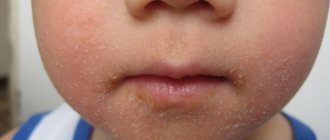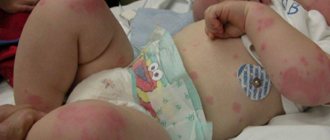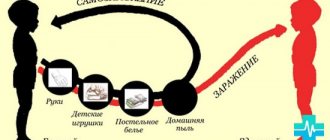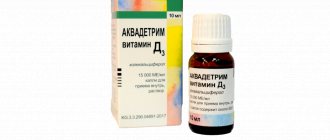What is rickets in children?
Rickets is a disease caused by an imbalance of calcium-phosphorus due to a lack of vitamin D. The main and most terrible consequence of the disease is deformation of the child’s bone structure.
Rickets most often manifests itself in children under 2 years of age. The disease leads to both physical and motor retardation.
The need for vitamin D for babies
The action of vitamin D is essential for the development of a child’s body.
- The element is able to strengthen the defenses of the child’s body so that it can fight back against viruses and infections.
- Participates in hormonal synthesis of the thyroid gland.
- Helps accelerate the entry of minerals and salts into bone tissue.
- Allows the intestines to actively absorb calcium.
- Accelerates the exchange of calcium and phosphorus in the body.
Risk factors in newborns
Infants have a fragile system of body functioning, even in conditions of adequate nutrition and the supply of necessary vitamins and minerals. The main factors that aggravate the course of the disease are:
- Having a baby prematurely.
A premature newborn has a disrupted enzymatic system. This complicates the absorption of vitamins, even despite a balanced diet.
- A newborn being bottle-fed.
Due to the peculiarity of the composition of the infant formula and obvious differences from breast milk, mineral metabolism disorders occur in the child’s body. Errors make it difficult to obtain vitamins useful for development.
- Large baby.
The body of a child with a large body weight needs an increased amount of vitamins.
- Children who are rarely exposed to the sun.
When sunlight hits a baby, the body stores vitamin D. And this only applies to walks in the fresh air, because ultraviolet rays do not pass through glass.
- Disturbance of intestinal microflora in a newborn.
Digestive problems only aggravate the process of vitamin absorption.
- Color of the skin.
Children with a light skin tone are able to quickly replenish their reserves of the “sunshine” vitamin. While this is not achieved so quickly for a dark-skinned child - for this purpose he needs to spend more time in the sun.
How does the disease develop in infants?
Rickets in infants has 3 stages of development.
- Easy stage.
The first degree of the disease is marked by minor disorders of the child’s nervous system, as well as minor deformations of the skeletal system. At this stage, the newborn may experience restless sleep, itching on the skin, and upon palpation the softened edge of the fontanel can be felt.
- Moderate stage.
Bone structure disorders become more pronounced. The muscles and nervous system of the baby are affected. The shape of the child’s skull changes, “rachitic rosary” appears, and the limbs become bent. The newborn begins to lag behind in motor development.
- Severe degree.
At the third stage of development of rickets, the symptoms worsen, as well as damage to the tubular bones. The baby's legs change shape greatly, and the chest and spine are deformed. The newborn may develop flat feet and anemia.
Types of rickets according to the nature of their course at an early age
Based on the nature of the development of rickets, two forms of the disease can be distinguished:
- Acute rickets. It is detected only in vitamin D deficiency, which is easily eliminated.
- Chronic rickets, which is a complication of acute. An advanced disease gradually but steadily destroys the bones of infants. Due to the hidden course of the disease, chronic rickets is quite difficult to treat.
Forms of manifestation of rickets
Rickets in a newborn can manifest itself in different forms:
- Primary disease. Manifests itself in vitamin D deficiency or impaired absorption.
- Secondary disease. The cause of development is considered to be the presence of health problems in the child:
- diseases of the kidneys and biliary tract;
- cell insensitivity to the vitamin.
Often, the development of rickets in a baby can be triggered by taking drugs that suppress seizures.
Dr. Komarovsky tells why parents should not perceive the disease rickets as something terrible.
Preventive measures
The baby is constantly monitored, but not always correctly. Follow the useful recommendations to protect your baby from the development of dangerous pathologies. Tips for preventing rickets:
- monitor the child’s balanced diet, pay attention to the mother’s nutrition;
- do not forget about frequent walks in the fresh air;
- avoid stressful situations;
- Warm up your baby's muscles with special exercises.
Learn more about pathology in newborns in the following video:
Causes of illness in an infant
There are many reasons for the development of rickets in infants. Either one factor or a combination of them can lead to the disease.
- Multiple pregnancy of the mother, which causes a lack of vitamins for the child’s body.
- Hereditary diseases or existing pathological conditions.
- Unbalanced nutrition of a nursing mother, as well as insufficient exposure to the sun.
- The child has insufficient amounts of enzymes in the body necessary for the absorption of the vitamin.
- Lack of adequate nutrition for infants during the period of introducing complementary foods.
- The newborn has allergic diseases that significantly weaken the immune system.
- Poor environmental conditions in the place of residence.
Diagnostics
The main diagnostic measure is a visual examination of the small patient; the specialist carefully listens to the parents’ complaints about the child’s pathological condition. Without tests, it is impossible to make an accurate diagnosis; the symptoms of the disease are very similar to other diseases.
READ ALSO: Is hemangioma dangerous in newborns: photo of the disease, clinical picture and methods of removing the tumor
To confirm or refute the following tests are taken:
- collecting urine to detect calcium loss in the body;
- biochemical analysis of blood and urine for the content of individual microelements;
- If necessary, they do an ultrasound of bones and various organs; diagnostics of the abdominal cavity is especially often carried out;
- An important role is played by diagnosing the amount and metabolism of vitamin D.
How to identify the disease?
Diagnosis of rickets in a child under one year of age is carried out comprehensively. Parents should monitor the child’s condition if there are factors predisposing to the disease.
Symptoms and signs of disease development
Every adult can notice the visible symptoms of rickets. Especially if it concerns the simultaneous manifestation of symptoms:
- hair loss on the head;
- the edges of the fontanel become soft to the touch;
- during activity, the baby begins to sweat intensely;
- delay in physical development or loss of skills acquired before illness;
- late eruption of baby teeth;
- decreased protective functions of the body, increased morbidity.
At an advanced stage of rickets, the disease in an infant can be noted:
- short stature;
- change in the shape of the skull;
- protruding chest;
- thickening of areas of the ribs;
- curvature of the limbs.
Diagnostics and tests
To confirm the diagnosis, blood is taken from the newborn for analysis. The study reveals the quantitative content of phosphorus, calcium and “sunshine” vitamin.
A visual inspection by a specialist is also necessary. The surgeon, when palpating the child, can easily recognize thickening and deformation of the bones. Only after this the baby is given X-rays of the forearms and shins. Based on the radiography and diagnostics, the diagnosis is clarified and treatment is prescribed.
Characteristic symptoms
Symptoms of rickets in infants can appear in the first months of life; responsible parents should closely monitor the baby’s health and take into account any changes in his behavior:
- with rickets there is anxiety and increased aggressiveness;
- stool disorders. The disease negatively affects the fragile gastrointestinal tract;
- restless sleep. There is twitching of the limbs during rest; the child quite often wakes up for no apparent reason.
If you suspect rickets, show the baby to the doctor; an extra examination won’t hurt.
Methods for treating rickets
An integrated approach to restoring children's health consists of a combination of various methods of treating rickets.
Medicines
The main role in the treatment of rickets in infants is given to taking medications containing the missing element.
- Vitamin D.
The drug is given to the infant in the form of drops.
- Aquadetrim.
The drug is used both for the treatment and prevention of rickets. The drug is prescribed from 4 weeks.
- Ergocalciferol.
An excellent preventive drug containing vitamin D2.
- Devisol, Vigantol, Videin.
The product is an oil solution with a significant concentration of the active element. A feature of the use of the product is the complete normalization of the gastrointestinal tract. The presence of dysbiosis in a newborn will not allow the vitamin to enter the body.
- Multivitamin complex for age.
The prescription and use of such drugs is justified, because when the disease appears, the metabolic functions of the body are disrupted.
- Calcium gluconate.
Prescribed mainly to premature babies due to a possible decrease in calcium levels. This occurs due to the intake of vitamin D in the first weeks of treatment.
UV exposure
Taking natural sunbathing is an optimal addition to the prescribed treatment for rickets. If weather conditions permit, walks should be taken several times a day.
In summer, children under one year old should not be in the open sun. It is enough to be in the shade. In winter, the child is prescribed ultraviolet irradiation. The procedure is carried out under a special lamp.
Radical treatment
As a rule, surgical intervention is indicated for severe forms of rickets, if drug treatment and prescribed physical procedures have not brought a positive effect. Deformed bones must be corrected through surgery.
Indications for surgical intervention are extremely rare. The rehabilitation period lasts a very long time, despite postoperative drug therapy.
Balanced diet
Treatment of rickets in infants begins with dietary adjustments. Full breastfeeding is necessary to normalize the balance of calcium and phosphorus in the child’s body. If the mother fails to do this, then the newborn is transferred to a special adapted formula.
It is important to introduce complementary foods in a timely manner, especially the child’s consumption of vegetable or animal fats. This is due to the fat solubility of vitamin D3. At the very beginning of introducing complementary foods, preference is given to simple pureed vegetables.
Physiotherapy
As part of the complex treatment and prevention of rickets, special attention is given to therapeutic exercises. The pediatrician usually prescribes a course in a clinic or shows several exercises that a mother can regularly do for her baby.
Gymnastics is indicated for children over 2 months old. All movements are performed smoothly, without causing discomfort to the child. The main condition for physical therapy is regularity of exercise. Only in this case will the metabolic processes in the newborn’s body be stabilized, which will speed up his recovery.
Possible intoxication
Sometimes taking prescribed medications can cause a number of symptoms in a newborn, indicating intoxication of the body. If you suspect such signs in a child, you should immediately seek medical help:
- refusal to breastfeed, bottle;
- restless sleep;
- breathing problems;
- barely noticeable cramps in the arms and legs;
- when palpating the liver area, an enlargement of the organ is suspected;
- weight loss;
- constant vomiting.
Residual stage
If the prescribed treatment was successful and the blood counts returned to normal, then the disease moves from the active phase to the inactive phase. This stage is called the period of residual phenomena.
This stage is characterized by the presence of reduced muscle tone in the newborn, as well as residual curvature of the bones. Infants experience frequent morbidity due to weakened immunity and impaired functioning of internal organs. Such symptoms can persist for quite a long time.
Recovery period
In order for the vitamins taken to be absorbed faster, the child needs to increase muscle tone. Physiotherapeutic procedures can help in the fight against rickets. They are prescribed after taking medications for two weeks.
A limitation in conducting sessions is the age of the child: treatment is prescribed only to infants who are six months old. The most common procedures are usually performed:
- massages;
- therapeutic exercises;
- balneotherapy, or medicinal baths.
Therapeutic baths show good results. They are taught in courses or from time to time. The composition used for bathing is prescribed by the attending physician. To prepare baths, use medicinal herbs, pine needles or sea salt.
Reviews
Veronika Mironova, 27 years old, Moscow
When my baby was 5 months old, I noticed that her bones were crunching, and a small bald spot appeared on the back of her head and the back of her head was a little flat. I went to the doctor for a consultation, he prescribed us to take vitamin D - Aquadetrim 3 drops a day, but he didn’t say anything about the fact that we had rickets. When I asked what the reason was, he said that the baby didn’t have enough calcium and it was time to introduce complementary foods. He advised me to give him an egg yolk 2 times a week, as well as fruit juices and vegetable soups, he also advised me to spend more time walking and assured me that everything would get better! Our doctor is very good, she followed all his recommendations and literally at 7 months all our problems disappeared, the first teeth appeared, our daughter began to crawl, and at 11 months she walked on her own!
Katerina Volkova, 32 years old, Kyiv
We were diagnosed with rickets when our daughter was 4 months old. It all started when she fell ill with bronchitis; we didn’t go out for a long time because the weather wasn’t good and we were afraid that we might catch a cold. We didn’t go outside for almost 2 months, but when we went to the doctor, he said that we had stage 1 rickets and we needed to start treatment to prevent the disease from progressing. We were prescribed Aquadetrim 3 drops, also massage, therapeutic exercises, and went for quartz treatment several times. Oddly enough, the doctor who massaged us said that he did not see any rickets. I didn’t know who to believe, but I still followed all the doctor’s orders. At 5 months, our first tooth appeared and then I calmed down, because I know that children with rickets grow teeth much later. Most likely, the massage therapist was right!
Olga Vlasova, 23 years old, Omsk
My daughter was born premature and very weak, we spent a long time in the hospital, took Aquadetrim as if for prevention, we were also prescribed Elkar drops and quartz treatment. After being discharged home, everything seemed to be fine, but when my daughter was 3 months old, the doctor said that we had rickets. There were no special signs, the only thing was that a bald patch appeared in the back of the head, and when the baby ate, she sweated a lot. I was in a panic, because they carried out prophylaxis for it and nothing helped. The doctor said that the vitamin is poorly absorbed and you need to undergo a series of studies to identify possible violations. We took a bunch of tests, which confirmed that we have a phosphorus-calcium metabolism disorder! Now we are undergoing treatment, but we take Devisol oil solution, we regularly go for massages, and we walk a lot. I really hope that we can overcome the disease and my daughter will be completely healthy!
Varvara Semenova , 25 years old, Lviv
My son was 5 months old when the doctor said he had visible signs of rickets. I didn’t notice them, and he drew his conclusions that the child was too “round” and at 5 months weighed almost 7,300. The doctor was also confused by the fact that the child could not stand on his feet. In general, it scared me almost to a heart attack. I got ready and decided to go to another pediatrician in a private clinic, so when I told him that we had rickets, he smiled and said not to worry, since there was no rickets, but he was not getting on his legs, since his weight was slightly higher than normal. Calmed me down! Now my son is 2 years old, a strong, healthy and active boy!
Possible complications and consequences of rickets
Advanced stages of rickets can lead to unpleasant and dangerous consequences for the baby.
- Development of anemia.
- Abnormal motor activity of the joints.
- Muscular hypotonia.
- The appearance of a rachitic hump on the spine.
- Hip dysplasia.
- Asymmetry of the skull shape.
Rickets must be treated on time. Otherwise, the disease can lead to irreparable consequences - disability of the child.
Disease prevention
Preventive measures should be carried out after the first days of a newborn’s life.
- Prolongation of breastfeeding. The minimum period of feeding a baby with breast milk is 6 months.
- Balanced diet for a nursing mother.
- Sunbathing for newborns.
- Proper feeding of infants.
- Taking vitamin D supplements to prevent rickets.
Rickets is not as scary as it really seems. After all, a timely visit to a doctor allows you to determine the presence of a disease and “neutralize the enemy.” Complex treatment bears fruit if all prescribed procedures are carried out systematically and the drugs are taken in the indicated doses.











